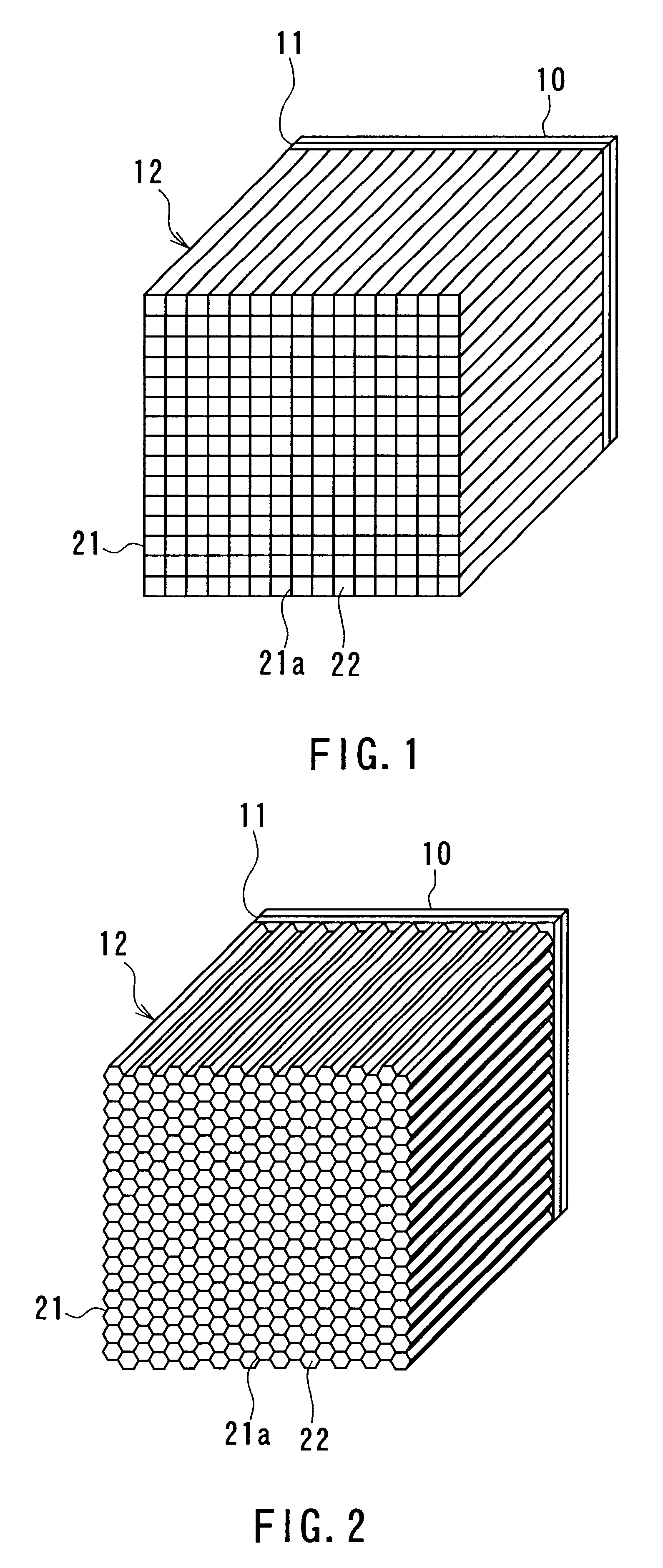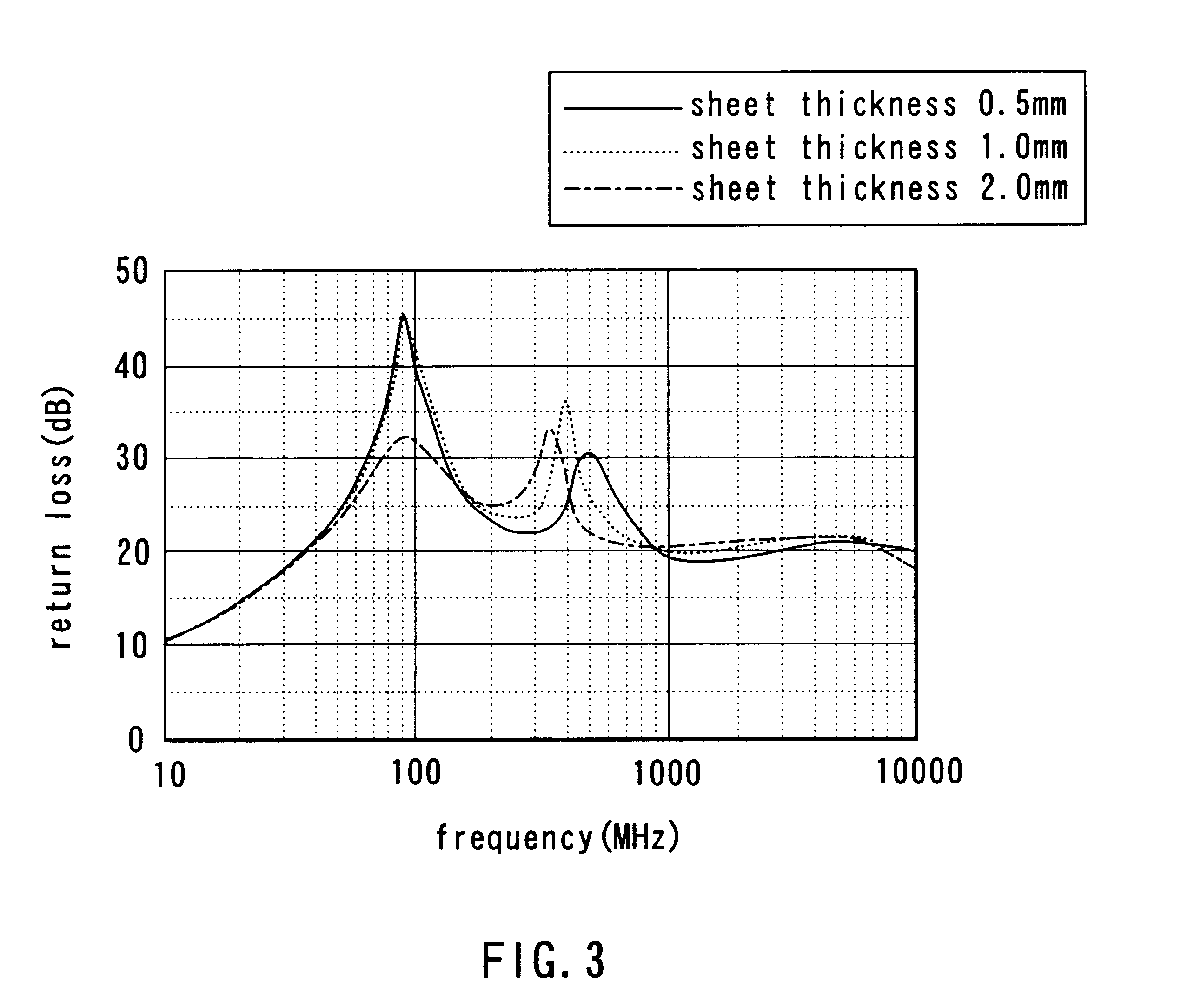Electromagnetic wave abosrber
a technology of electromagnetic waves and absorbers, applied in the field of electromagnetic wave absorbers, can solve the problems of imposing limitations on the building site, difficult to apply this absorber to an anechoic chamber that requires high-level characteristics, and difficulty in prior art to implement etc., to achieve excellent electromagnetic wave absorbing characteristics and reduce thickness
- Summary
- Abstract
- Description
- Claims
- Application Information
AI Technical Summary
Benefits of technology
Problems solved by technology
Method used
Image
Examples
second example
In a second example ferrite paper was utilized. This paper was made of hydrous inorganic compound consisting of glass fiber, aramide fiber and magnesium silicate whose weight ratio was 2:1:1 with which 70 weight % of Mn--Mg--Zn-type ferrite powder was mixed. Sheets of this paper were arranged to form a grid with a spacing of 20 mm to make the structure 21. This paper was formed through a paper fabricating technique and pressing. Each space between adjacent ones of the elements 21a of the structure 21 was filled with the dielectric loss material 22 made of molded Styrofoam containing graphite. The second wave absorber section 12 as shown in FIG. 1 was thus fabricated.
In the second example three types of second wave absorber sections 12 having the above-described configuration were fabricated. The ferrite paper had a thickness of 1.0 mm. The amounts of graphite contained in the molded Styrofoam were 6, 8 and 11 grams per liter, respectively. For comparison with the sections 12, refere...
third example
In a third example ferrite paper was utilized. This paper was made of hydrous inorganic compound consisting of glass fiber, aramide fiber and magnesium silicate whose weight ratio was 2:1:1 with which 70 weight % of Mn--Mg--Zn-type ferrite powder was mixed. Sheets of this paper were arranged to form a honeycomb to make the structure 21. This paper was formed through a paper fabricating technique and pressing. The space between adjacent ones of the elements 21a of the structure 21 was 20 mm. Next, a conductive coating that contains graphite was applied to surfaces of the elements 21a to form the dielectric loss materials 22. The second wave absorber section 12 as shown in FIG. 2 was thus fabricated.
In the third example three types of second wave absorber sections 12 having the above-described configuration were fabricated. The ferrite paper of these sections 12 had a thickness of 1.0 mm. The amounts of graphite contained in the entire volume of the respective second wave absorber sec...
PUM
| Property | Measurement | Unit |
|---|---|---|
| thickness | aaaaa | aaaaa |
| thickness | aaaaa | aaaaa |
| thickness | aaaaa | aaaaa |
Abstract
Description
Claims
Application Information
 Login to View More
Login to View More - R&D
- Intellectual Property
- Life Sciences
- Materials
- Tech Scout
- Unparalleled Data Quality
- Higher Quality Content
- 60% Fewer Hallucinations
Browse by: Latest US Patents, China's latest patents, Technical Efficacy Thesaurus, Application Domain, Technology Topic, Popular Technical Reports.
© 2025 PatSnap. All rights reserved.Legal|Privacy policy|Modern Slavery Act Transparency Statement|Sitemap|About US| Contact US: help@patsnap.com



